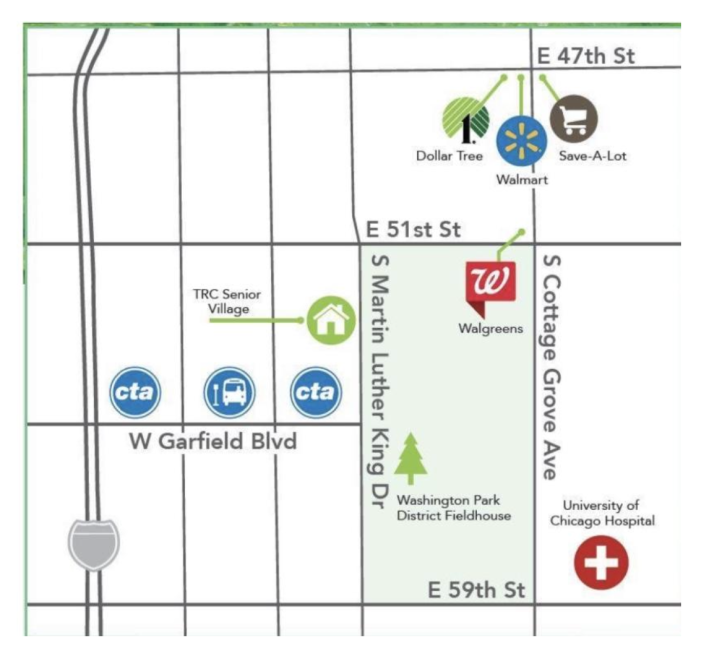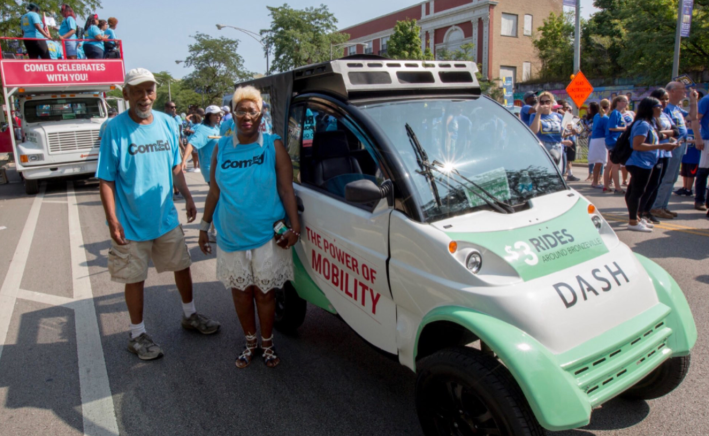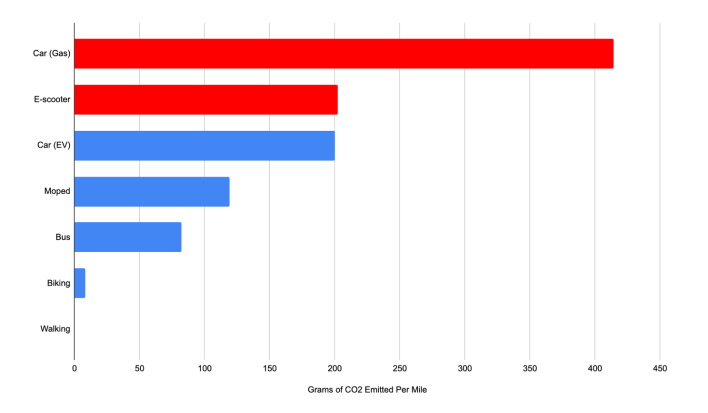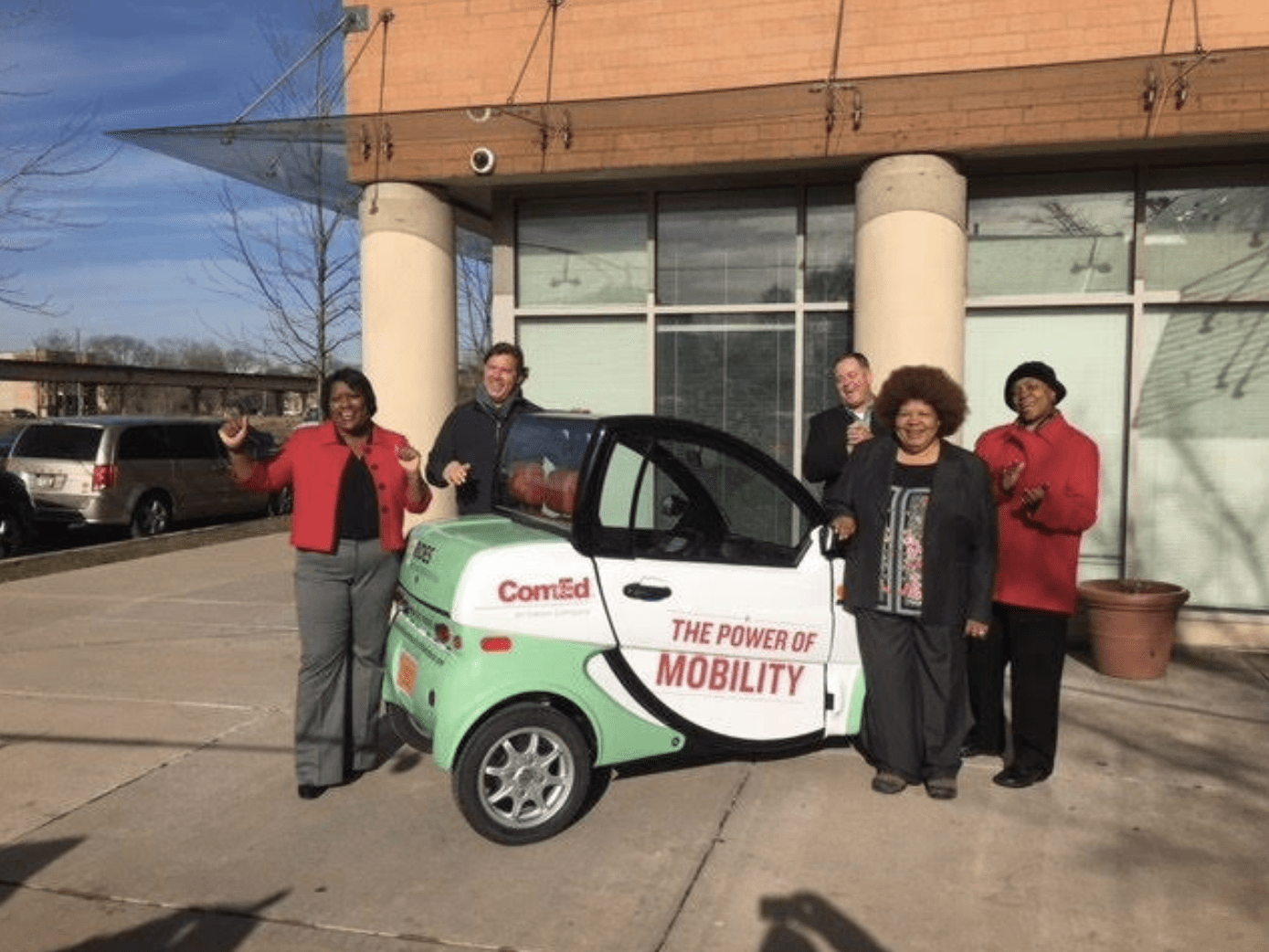Author Brandon Bordenkircher is a vice president of business development for Innova EV, a Chicago-based electric car company. Streetsblog Chicago agreed to publish his discussion of the company's recent pilot in Bronzeville. We did not receive payment to run the piece.
Obviously, fast, frequent, and reliable transit is a safer and more space-efficient, sustainable, and cost-effective form of urban transportation than cars, even small, low-speed electric ones. However, we were interested in hearing Bordenkircher's pitch on how these vehicles, like bike-share and e-scooters, might have potential to fill in gaps in the transportation network and provide first- and last-mile trips to rapid transit.
-John Greenfield, co-editor
Chicago's Bronzeville neighborhood is rich with history and cultural capital. Bronzeville was known as the “Black Metropolis,” the historic heart of Black Chicago, and artists like Muddy Waters, Louis Armstrong, poet Gwendolyn Brooks, and activist Ida B. Wells called it home. Crain’s Chicago has a new podcast exploring the history of Bronzeville. But even with all that cache, Bronzeville still faces transportation challenges, especially when it comes to its seniors.
Innova's research found the average commute time for Bronzeville seniors to get to their doctor was over an hour, typically involving two CTA bus rides, which can be even more challenging during Chicago’s frigid winters, when sidewalks are often icy. The median income for Bronzeville residents is about $37,000, while AAA estimates the average cost of owning a vehicle to be $10,000 annually, so car ownership often isn't a viable option. Limited transportation access often makes it more difficult for residents on fixed incomes to access jobs, education, healthcare, and fresh food, and the problem disproportionately impacts people of color.
Bronzeville Mobility Pilot
The Bronzeville Mobility Pilot was an effort to address transportation challenges for seniors devised by the Community of the Future initiative. This program is a partnership between ComEd, Innova EV, Eluminocity GmbH (a Germany-based EV infrastructure company), and the Bronzeville Community Development Partnership that leverages smart grid technology with the goal of supporting the community’s sustainability goals and enhancing everyday life. The pilot started in December 2017 and was paused due to the COVID-19 pandemic in March of 2020. Read a white paper on the pilot here.
The partners launched the pilot to test an electric car ride service specifically for seniors. The two year ride-hail pilot offered affordable transportation (subsidized $3 rides within Bronzeville) in compact electric vehicles that don't add to emissions problems in the cities where they're driven, to help seniors get to and from doctors offices, the pharmacy, the grocery store, transit stations, and other neighborhood destinations. The pilot used Innova EV’s Dash, a street-legal electric vehicle with a maximum speed of 35 miles per hour (Chicago's default speed limit is 30), to provide private rides for senior citizens who live in three Bronzeville senior housing buildings.
Some numbers from Community of the Future pilot:
- 225 seniors transported
- 1,431 rides completed
- 1,464 pounds of CO2 offset
- 16 jobs created
- Brought an estimated $32,000 in economic benefits to Bronzeville
- Employed veterans as vehicle drivers

- Healthcare services: 39 percent of trips
- "Lifestyle": 21 percent
- Pharmacy: 11 percent
- Groceries: 11 percent
- Transit: 8 percent
- TRC Senior Village: 8 percent
About the Dash vehicle
The vehicle selected for the pilot was Innova EV’s Dash, which is a 100-percent electric vehicle with a range of 150 miles per charge of the lithium-ion battery. The Dash is an IoT (Internet of Things) 4G and Wifi connected vehicle with more than 50 built-in sensors that collect data about the car’s performance and ridership statistics.
While only one car was in service at a time, two cars were provided to Bronzeville in order to ensure continued service in the event of one vehicles required maintenance. The Dash vehicle was supported by a Level 2 EV Charging Unit (240V, 40A) installed at a nearby bed-and-breakfast where the vehicle was stored and charged when not in use.

There is a plethora of studies the negative effects of traditional ride-hail in terms of increasing the total number of vehicle miles traveled, and replacing walking, biking, and transit trips (check out this Streetsblog article on a city of Chicago study of the issue for details.) However, compared to typical gas-powered Uber and Lyft vehicles, with the Dash, the CO2 emissions are significantly lower and the roads are safer due to the Dash’s 35 mph speed cap and lighter weight, about 1,000 pounds.
Moreover, since the pilot was geared towards seniors, it provided trips to people for whom walking to destinations and to access transit may be hazardous during the winter due to icy sidewalks. [Of course another way to address that obstacle is ensuring that sidewalks are effectively cleared during the winter. - Ed] For many of these residents riding a bike may not be considered an option, even when the weather is conducive. So the pilot aimed to improve mobility for those who might have otherwise lacked transportation options altogether.

Next steps
William P. Davis, board secretary at the Bronzeville Community Development Partnership, championed the pilot. He says the Innova EV program is evidence that “Bronzeville is an innovation lab for demonstrating micro-transit and e-mobility solutions, as well as other displays of renewable energy and beneficial electrification.”
Mr. Davis also opined that although the Bronzeville neighborhood is a transit rich area, future partnerships could help fill existing gaps pertaining to issues like “charging incentives, and electrification of mass transit and greater access to public transit. The field is wide open for new e-mobility and micro-transit solutions (including e-cargo delivery.”
Although the coronavirus paused the program, Bronzeville’s need for equitable, affordable, and reliable transportation did not end when the pandemic hit. In fact, the community needs such programs to not only relaunch, but to expand.
We're planning to resume the pilot this spring of 2022, while expanding to the Illinois Institute of Technology campus.





